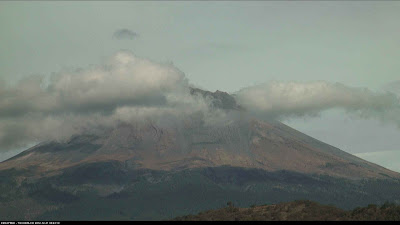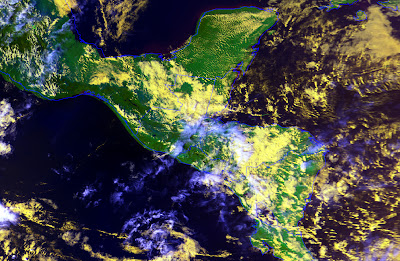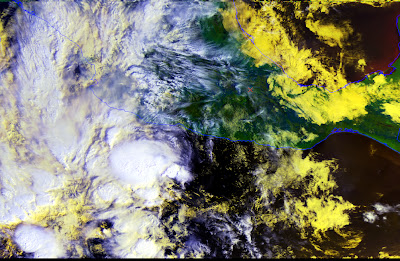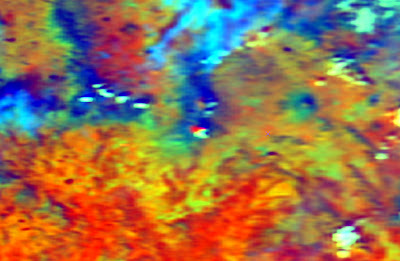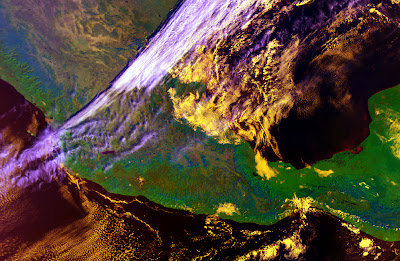During the latest days Popo´s activity was in a important level with steam columns and ash toward ESE. The past 24 h the monitoring system had detected 51 events, mostly with steam jet column formation starting from SE at crater bottom. Some of the explosive phases with ash had come to Puebla city and small ash accounts had fallen at NW and SW of city situated 44 km E from volcano. Satellite NOAA 16 infrared sounders detected infrared signature at crater, this situation reveals a constant thermic activity, perhaps by a lava small deposit at bottom. This lava flux integrate a whole cover in steam exit and is a high pressure system.
Probably next hours will produce a new explosive phases. In this date, there are not official actions with people living around volcano.
 |
| Ayer 14:28 fase explosiva con ceniza. |
 |
| Durante la noche, registros térmicos. |
 |
| 09:26 fase explosiva con ceniza rumbo SSE, |
 |
| NOAA 16. 09:07 TC. Canal 2 infrarrojo. Falla Motagua Polochic en Guatemala. La falla forma parte del sistema de placas del Caribe. |
 |
| NOAA 16. Canal 2 infrarrojo. Región de los volcanes centrales Popo Iztaccíhuatl y Malinche. |
 |
NOAA 16. Multicanal r=1, Frente frío 17 afecta el litoral del Golfo de México. baja temperatura, lloviznas, viento del NNE, oleaje alto.
Las Sierras Norte y >Negra entre Veracruz y Puebla con lloviznas. |
 |
| NOAA 16. Avance del frente frío 17. |
 |
| NOAA 16. Multicanal r=2. Centro Norte de México afectado por el frente frío 17. |
 |
NOAA 16. Multicanal rgb invertido. Registro térmico en el Popocatépetl. Las zonas circulares
rojas corresponden a la irradiación infrarroja de los arenales en las partes altas, sin embargo, la
parte violeta en el cráter del Popo, corresponde a la señal térmica proveniente probablemente de
un pequeño flujo lávico en la base del cráter. |

